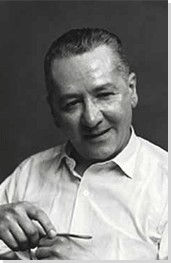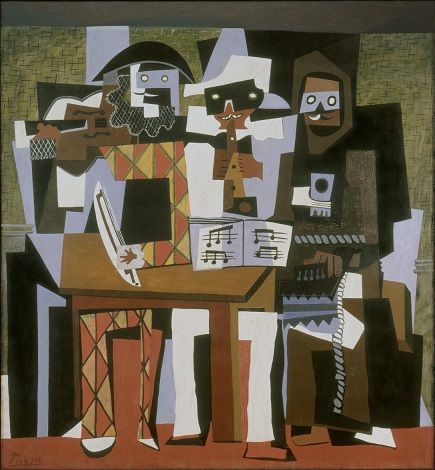Summary of William Baziotes
William Baziotes was a New York painter whose lyrical and often mysterious works relied heavily on subject matter derived from biomorphism and Symbolist poetry. He was an integral part of the Abstract Expressionist circle and exhibited with them frequently. Like his peers, he was deeply committed to concerns of paint application and abstracted forms, yet his interest in the medium of paint was combined with many sources for his imagery to produce works that evoked particular moods, or dream-like states - often more closely related to European Surrealism than to Abstract Expressionism. This duality in his work was described as "biomorphic abstraction" and was influential to artists such as Mark Rothko.
Accomplishments
- Baziotes was one of the few Abstract Expressionist artists who remained committed to the figure. He took his early Surrealist-inspired explorations further by creating strange, primitive imagery that seems to have been pulled from the darkness of the subconscious. His works in this vein were described as "biomorphic abstraction" because of his use of organic forms and other figurative elements that were not easily identifiable.
- Unlike his Abstract Expressionist peers, even Baziotes' most experimental canvases contain a structured, almost grid-like composition that was influenced by early Cubism and the artist's work with stained glass. In conjunction with this underlying structure, however, Baziotes also felt that art should evoke emotions and moods through color, shape, and paint application, thus many of his works have a lyrical or poetic element.
Important Art by William Baziotes
The Parachutists
The Parachutists showcases several of Baziotes's early influences. His interest in Cubism was short-lived but is evident in the faceted rendering of the parachutes and the grid-like geometry of the composition. His debt to Surrealism and especially their automatist techniques can be seen in the drips of paint that run down the canvas along with the scumbled brushwork through which color is directly blended on the canvas. The brilliant color and the heavy dark lines reveal his debt to the aesthetics of stained glass. The subject matter is a possible homage to the parachutists of D-Day who, at great risk to their lives, were dropped behind enemy lines at the beginning of the invasion of Normandy in 1944.
Duco enamel on canvas - Solomon R. Guggenheim Foundation, Venice
Dwarf
This work is one of a group of paintings from 1947 that are all distinguished by a single figure dominating the composition. The primitive, grotesque figures are derived from Surrealist biomorphism and are not clearly human or animal. Like The Parachutists (1944), this work is also about war, but without the lighthearted, almost playful quality of the former. Dwarf instead captures the gruesomeness and violence of war in its reference to a mutilated figure without arms who has oversized, sharp teeth. All of the images in the group have concentric circles or spaces in their lower halves that are meant to be suggestive of female genitalia or targets. The works are a good example of the "biomorphic abstraction," that marked much of the artist's output, characterized by organic forms that are familiar, resembling both plants and animals, but that do not coalesce into recognizable shapes. His use of such imagery is perhaps tied to his interest in Symbolist poetry that is characterized by indirect descriptions, making multiple meanings possible.
Oil on canvas - The Museum of Modern Art, New York
Flesh Eaters
In the early 1950s the artist turned more to abstracted depictions of nature with less of a focus on surface and paint handling and, indeed, Baziotes began to eliminate brushwork altogether by repetitive rubbing of the oil paint on the surface. In Flesh Eaters the soft application of paint creates a soft lyrical or poetic quality that contrasts markedly with the title of the work and thus creates ambiguity. The forms have become less recognizable than in the previous decade, evoking a primitive, primordial world where enigmatic and sometimes aggressive plant and animal forms float and collide.
Oil and charcoal on canvas - The Metropolitan Museum of Art, New York City
Pompeii
This work stands out in Baziotes's oeuvre because of its reference to a specific geographic location and its strong use of color. Baziotes was fascinated by ancient Roman civilization and while the painting does not depict anything specifically Pompeian, it evokes both the violence of Pompeii's end and more generally the enigma of the past. The rectangular shape along the upper half of the canvas, for example, references the Roman use of wall paintings in domestic decoration. The all-over, dominating red evokes the fiery and dramatic end of Pompeii in the explosion of Mt. Vesuvius in 1979, when the city was engulfed in lava. The sinuous gray motif in the foreground is less specific and could indicate flames, bulls' horns, or any number of other things, but, along with the black cloud at the center of the painting, contributes to an overall feeling of doom and mystery.
Oil on canvas - The Museum of Modern Art, New York
Dusk
This work represents Baziotes's mature style: abstracted, biomorphic forms that float in a sea of muted, soft color. The lyricism of the work underscores the artist's interest in poetry and interior states that is especially marked in his work from the 1950s and 1960s. The lack of a defined space for the forms gives the work a timeless feel, while the forms themselves have become less menacing and jagged. With its misty setting and emblem of power, the work evokes a primordial rite or ritual.
Oil on canvas - The Solomon R. Guggenheim Museum, New York
Aquatic
The sea, as a place of unfathomable depth and ancient origins, was a common theme in Baziotes's work. In the 1950s and early 1960s, Baziotes became increasingly interested in evoking an oceanic or aquatic feeling through subtle and shifting grounds of color. The shapes here recall seaweed or underwater creatures, and the sharp edges of Baziotes's early biomorphic forms have been smoothed and further abstracted. In a 1959 issue of the journal It Is, Baziotes described his interests this way: "It is the mysterious that I love in my painting. It is the stillness and the silence. I want my picture to take effect very slowly, to obsess and to haunt." This late work shows a delicate but clear shape against an aqueous, amorphous background. The contour lines of Baziotes's earlier period have all but disappeared.
Oil on canvas - The Solomon R. Guggenheim Museum, New York, New York
Biography of William Baziotes
Childhood
William Baziotes was born in 1912 to Greek parents in Pittsburgh, Pennsylvania. His family moved shortly thereafter to the working class city of Reading, Pennsylvania, where Baziotes spent his childhood. As a young adult, Baziotes worked at the Case Glass Company from 1931 to 1933, antiquing glass and doing other chores while taking an evening drawing class. It was in Reading that Baziotes met Byron Vazsakas, a poet who became a good friend and who introduced the painter to the work of Charles Baudelaire and the Symbolist poets, whose writing would have a significant impact on his work throughout his life. Vazsakas encouraged Baziotes to pursue art and Baziotes moved to New York City to study painting in 1933.
Early Training
Baziotes attended the National Academy of Design in New York City from 1933 until 1936 and also studied the work of the Old Masters during this period. He taught in Queens for the Works Progress Administration of the Federal Art Project from 1936 to 1938 and then worked on the WPA Easel Project from 1938 through 1941, where he was paid to stay in his studio and make art. It was in these various jobs that he was introduced to artists working in the Surrealist idiom, many of them European immigrants. He met the Chilean Surrealist painter Roberto Matta who was a proponent of automatic painting and who exerted a large influence on Baziotes. Robert Motherwell, whom he also met during this period, became a close friend. Baziotes married Ethel Copstein in 1941, and they lived in Morningside Heights, New York. One of Baziotes's early group shows was the First Papers of Surrealism exhibition in New York in 1942.
The Surrealist interest in the psychic and subconscious dimension manifested itself in the odd, lyrical forms that populate Baziotes's paintings, with the Spanish painter Joan Miró being a particular inspiration. Many other New York painters in addition to Baziotes, including Adolph Gottlieb, Clyfford Still, and Mark Rothko also turned to what they deemed primitive or mythological forms in an attempt to get at a more universal significance.
Mature Period
Baziotes was a major figure in the galleries, schools, and clubs that constituted the social world of Abstract Expressionism. He had his first solo show at Peggy Guggenheim's Art of This Century Gallery in 1944 and a second one in 1946 at the Samuel Kootz Gallery. Even more important than the galleries were the schools and clubs that the Abstract Expressionists founded and attended. Some of these were quite informal, like the regular discussions that took place at the Cedar Street Tavern on Eighth Street in Greenwich Village. Others were more purposeful. In 1948, Baziotes, along with David Hare, Robert Motherwell, and Mark Rothko, founded the Subjects of the Artist School, a group that, among other things, provided a speakers' forum where American and European artists could address topics of interest for the modern painter.
Late Years and Death
Unlike Rothko and Still, who moved away from mythic symbols and allusions to more purely abstract work, Baziotes's paintings maintained a Surrealist and figurative quality.
Baziotes worked throughout the 1950s as a teaching artist at the Brooklyn Museum Art School, New York University, the People's Art Center at the Museum of Modern Art, and the City University of New York, Hunter College. In 1962, he was included in Sydney Janis's important exhibition Ten American Painters. Baziotes died of lung cancer in 1963.
The Legacy of William Baziotes
While stylistically Baziotes remained somewhat apart from the main Abstract Expressionists, he exerted a tremendous and shaping influence on many painters at the time. He was one of the first New York artists to actively experiment with automatic drawing and other Surrealist techniques, and he created forums for debate that were central to the New York scene in the 1940s.
Influences and Connections


























